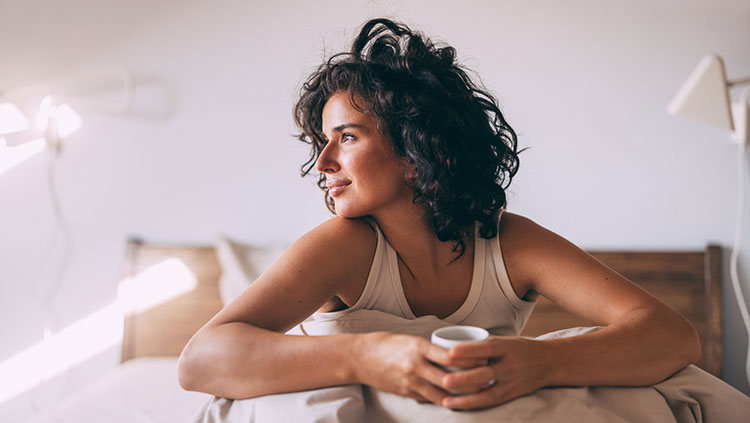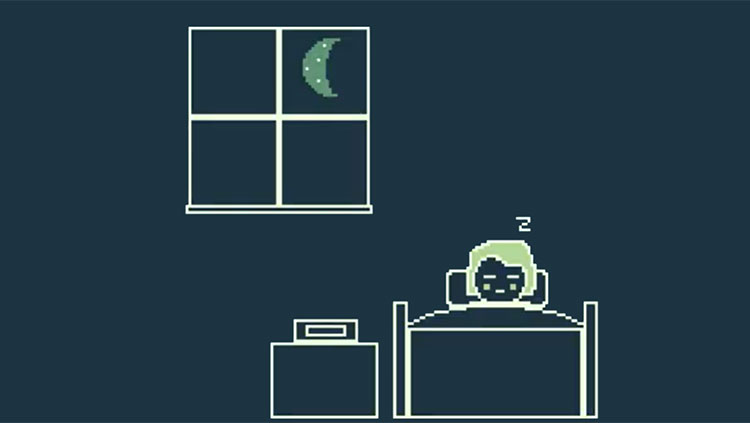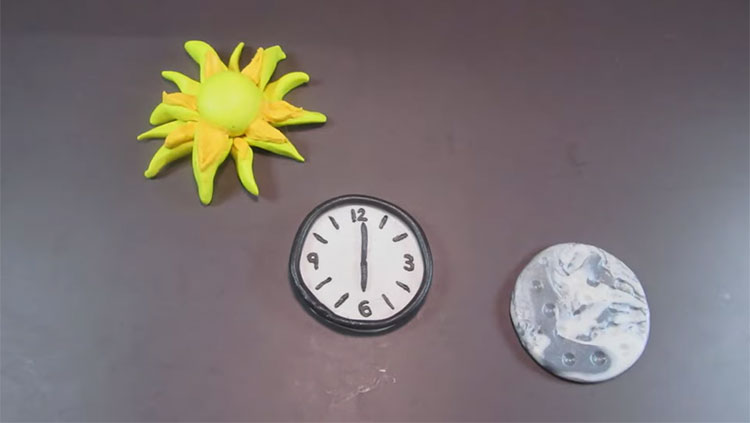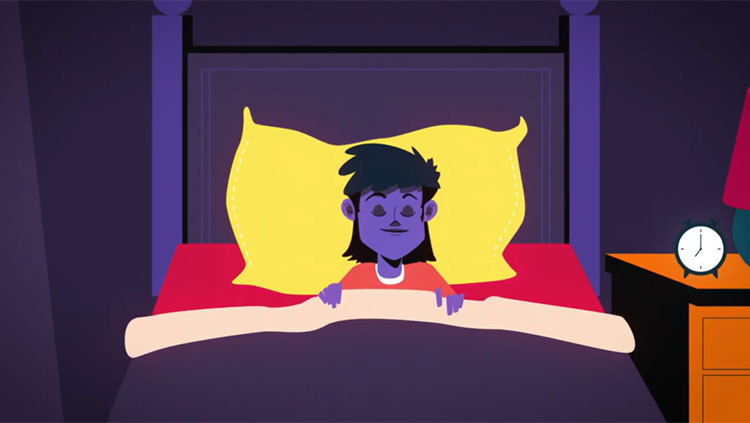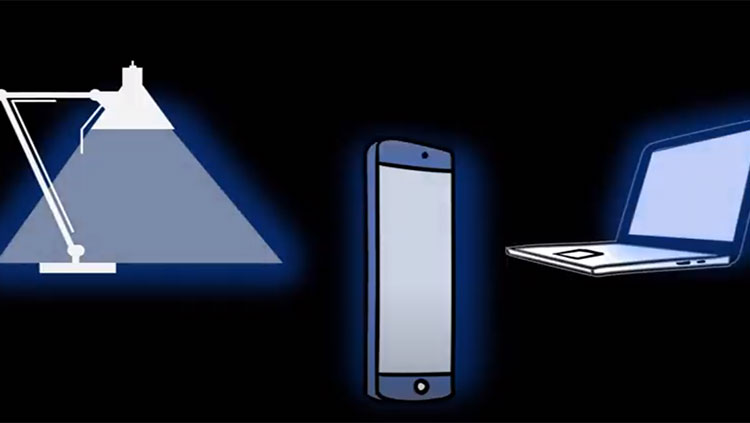Resetting the Brain's Clock
- Published7 Jun 2019
- Author Linda Lombardi
- Source BrainFacts/SfN
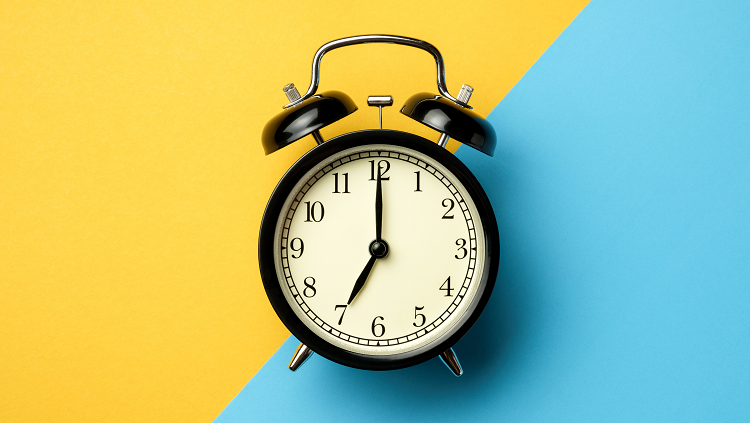
Turns out, airplanes have horns. That’s what neuroscientist Erik Herzog discovered biking home from work one morning in rural North Carolina.
Spaced out and groggy from a two-week schedule based on 28-hour days, Herzog, who studies circadian rhythms, had woken up four hours later each day. In effect, he suffered from jetlag every morning, each day off by another four hours. Herzog’s brain grew so foggy that on that particular morning as he took his usual shortcut through a small airport, he failed to look both ways.
That’s when he learned airplanes will honk at you. “As I looked over my shoulder, I saw an airplane coming down on the runway that I was biking along,” he said. “I had to swerve out of the way of this airplane.”
Even if you never get close to being hit by an airplane, jet lag and irregular sleep schedules play havoc with your biological clock — and your health.
The Body’s Clock
Your internal clock “governs nearly every function we know about,” says Elizabeth Klerman, a sleep scientist and physician at Brigham and Women's Hospital and Harvard Medical School. “It governs when you feel sleepy and when you feel alert, it governs when you feel hungry, it changes the kind of sleep you have when you are asleep, it changes your performance, your alertness, your metabolic rate, your digestive function, your mood — everything.”
Nestled in the base of the brain, the body’s master clock runs on an intrinsic 24-hour cycle and resides in a portion of the hypothalamus called the suprachiasmatic nucleus, or SCN. “[The hypothalamus] is a basic, primitive part of the brain that’s in all vertebrates,” says Herzog. It handles “things like hormone release, body temperature, [and] your fight-or-flight response.”
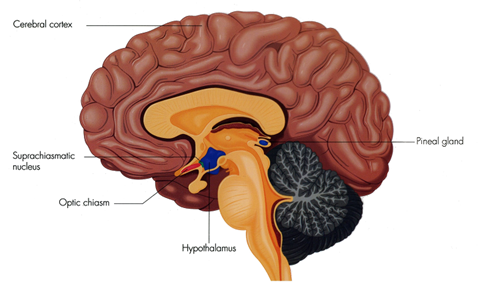
It’s also sensitive to light. Neurons in the SCN fire more during the day and less at night because light-sensing cells in the retina — called retinal ganglion cells — transmit electrical impulses to the SCN via the optic nerve. Roughly 20,000 neurons comprise the SCN, and 10 percent express a neuropeptide called vasoactive intestinal polypeptide, or VIP, which synchronizes the activity of other SCN neurons.
Herzog’s lab at Washington University in St. Louis recently discovered two types of VIP-expressing neurons in mice: ones that fire in a steady, marching pattern and others that fire in an irregular pattern, which Herzog likens to tango dancers. When the researchers engineered a way to make all the VIP neurons fire in the irregular tango pattern, they found they could shift the mice to a new internal clock.
Prior to this work, Herzog says, “we didn’t know which cell types received that light information, and we didn’t know how they conveyed that light information to the rest of the brain.”
The Dark Side of Artificial Light
You don’t need to fly around the world to mess up your circadian rhythms. Working night shifts or constantly shifting your sleep schedule acts like a chronic form of jet lag, with potentially dire consequences. Shift workers, for example, experience higher rates of obesity, heart disease, mood disorders, and even cancer.
“Trying to be awake and trying to function at the wrong biological time when the SCN is telling us we should be asleep, or trying to sleep when the SCN is telling us we should be awake, increases the risk of these health problems,” says Kenneth Wright, a neuroscientist at the University of Colorado Boulder who studies the health effects of circadian disruptions. What’s more, artificial light and our propensity for staring at screens is making matters worse.
Levels of the hormone melatonin rise at sunset to induce sleep and then fall toward sunrise — or at least that’s what’s supposed to happen. Using wrist-worn monitors to track sleep and light exposure, and saliva samples to measure melatonin fluctuations, Wright has observed that for his study volunteers’ melatonin levels remain elevated for a few hours after waking. This suggests their bodies are still in sleep mode.
“Then we take them backcountry camping and remove all artificial lighting for a whole week,” Wright says.
After a week without artificial light, the participants’ melatonin production rose at sunset and fell near sunrise, indicating that their biological clocks now lined up with the natural light-dark cycle. The change demonstrates that in an artificially lit world, “we’ve lost synchrony with the natural environment,” Wright says.
Likewise, our light-emitting devices disrupt our sleep schedules. The cells transmitting signals to the suprachiasmatic nucleus are particularly sensitive to the blue wavelength of light. That wavelength is present in sunlight and emitted by cell phones, computers, and tablets. In one study, Klerman’s colleagues in the Division of Sleep and Circadian Disorders at Brigham and Women’s Hospital compared people who read a physical book before bedtime with people who read on a light-emitting eBook reader. “The people who read on the e-reader had more problems falling asleep, and they had problems waking up,” she says.
Exposure Therapy
If you want to get over jetlag, bask in some natural light and don’t sleep in the daytime, says Klerman.
Keeping a healthy sleep schedule otherwise means dimming the lights a couple hours before bedtime and putting away electronic devices. If you are in sync with your time zone, your body is already producing melatonin at bedtime, and taking more won’t help. While it could potentially help with jet lag, Klerman advises against it as most products in the U.S. are not regulated.
Finally, Wright cautions against trying to make up all your sleep on the weekend because it shifts your clock later and makes Monday worse. “Sleep in a little,” he says, “but don’t sleep in till noon.”
CONTENT PROVIDED BY
BrainFacts/SfN
References
Mazuski, C., Abel, J. H., Chen, S. P., Hermanstyne, T. O., Jones, J. R., Simon, T., … Herzog, E. D. (2018). Entrainment of Circadian Rhythms Depends on Firing Rates and Neuropeptide Release of VIP SCN Neurons. Neuron, 99(3), 555-563.e5. doi: 10.1016/j.neuron.2018.06.029
Wright, K. P., McHill, A. W., Birks, B. R., Griffin, B. R., Rusterholz, T., & Chinoy, E. D. (2013). Entrainment of the Human Circadian Clock to the Natural Light-Dark Cycle. Current Biology, 23(16), 1554–1558. doi: 10.1016/j.cub.2013.06.039



